Key:  Restaurant
Restaurant  Cafe
Cafe  Bar
Bar  Spa
Spa  Fitness
Fitness
Soi 18
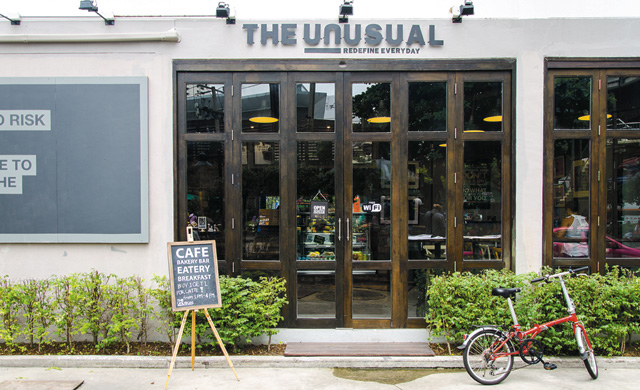
This small grey space, elevated by vibrant wooden seating serves coffee starting from B65, while the menu features suitably unusual sounding dishes like the Woody Allen’s Scoop (poached egg, ham, French toast and fruits, B150) and kai kra tha (crispy chicken) with garlic bread and couscous salad served with coffee (B150). They also do more straightforward dishes like pasta (B100-B170) and crepes Suzette (B170).
Sukhumvit Soi 18, 02-261-1778. Open daily 7am-10pm
Soi 19

With its lavish interior of timber, brick and leather, El Gaucho Argentinian Steakhouse certainly lives up to its macho name (a gaucho is a South American cowboy). The steakhouse brings Argentina’s great love of meat to Bangkok, offering high quality cuts simply prepared. For a taste of authentic asado (Argentinian barbeque), start with the spicy homemade salchicha (sausage, B270), before tucking into some beef (starting from B990/250g) and mixed skewers (B1,990) with traditional chimichurri sauce (B90) and a glass of Malbec wine (B250-530). Warning: the place is good but not cheap.
8, 8/1-7 Sukhumvit Soi 19, 02-255-2864. Open daily 7am-midnight. www.elgaucho.asia/thailand

This bar-cum-restaurant serves international fusion like chitpole beef tartar with quail egg, parmesan croutons, kimchi puree, cornichons, shallot and red onion (B240), duck croustillant rolled in brick pastry served with plum chutney, pickle ginger and cornichons (B240) and eggplant parmigiana with basil oil, mesclun, leek vinaigrette and fresh summer truffles (B350). Join them during Tapas Time (5:45pm-11pm) for three tapas options and a glass of wine for B300 plus other combo deals.
Ground/F, Ocean Tower II, Asoke Road Soi 3, 02-665-2772. Open daily 9am-11pm. www.maverickbkk.com
4. The Aspire Club 

This massive gym offers a wide range of fat-burning boot camp exercises, altitude training programs, youth gym training and the intense strength and conditioning training known as Cross Fit, which combines weight training, gymnastics and sprints to help you achieve faster results. Membership fees start from B3,103 for one month of unlimited gym use and B6,313 for one month of group training covering all classes.
348/2 Sukhumvit Rd., BTS Asoke Exit 4. 02-229-4114. Open Mon-Fri 6am-9pm, Sat-Sun 8am-6pm
Soi 20
5. The Red Tiger 


This newly opened pub and restaurant offers the ambience of a contemporary sports bar. Inside, the sleek wood floors and flowing white walls are offset by the burgundy booths, while outside is more informal, providing a large covered terrace where you can relax and enjoy no less than nine draught beers including Speckled Hen, Paulaner and Sapporo. There’s also an extensive pub grub menu covering such classics as grilled pork sausage onion sandwich (B220) and chicken massaman curry (B180). The real emphasis is on sport, either playing it in the games room with its pool table and dart board or watching via the huge 60 inch TV.
Sukhumvit Soi 20, 02-259-5960. Open daily 9-2am
Soi 21
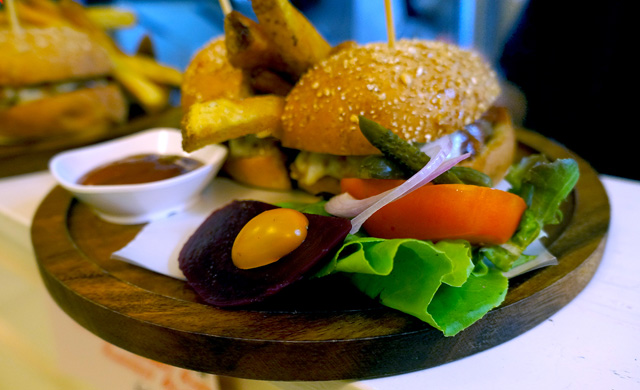
This Aussie eatery located close to Chokchai Steakhouse, serves up Australian favorites in a casual diner setting. Chef Roland Graham’s recommendations include the lamb sausage rolls and homemade beef or veggie pies, or you can also opt for a lamb shoulder burger (prices range from B95-B480).
Sukhumvit 21 Soi 2, 080-052-7336. Open daily noon-9pm
Soi 22
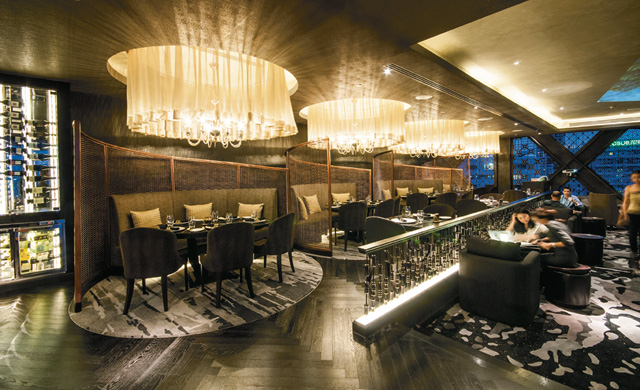
This new Indian restaurant sits in a striking cantilevered structure on the 29/F of the new Holiday Inn. A North Indian menu is served up by Chef Ramneek Singh Lamba in the dining room, while you can also enjoy cigars with single-malt whiskeys in the outdoor lounge or sip cocktails to go with the view and electro at the DJ bar. The classic Indian dishes include murgh chandi kebab (marinated chicken with yogurt, cardamom and mace, B380) and crispy okra with cashew and mango powder (B320). As for the cocktails, they make use of ingredients like beetroot, cinnamon and cumin powder. Signature drinks include the vodka khatta pudina (vodka, guava juice and cumin powder, B295) and sugar-hurri-cane (sugarcane juice, vodka, tequila and mint, B295).
29/F, Holiday Inn Sukhumvit, Sukhumvit Soi 22, 02-683-4704. Open daily 6pm-1am
8. Bangkok Betty 

On the ground floor of the Holiday Inn on Sukhumvit Soi 22, designer Ashley Sutton is busy creating his latest venue, Bangkok Betty, due to open this October. The man behind the Dickensian factory-themed Iron Fairy and the Orientalist boudoir Maggie Choo’s is this time inspired by a military theme, and plans on a full-on diner, rather than just a bar. We heard there’ll be some classic touches like a three-piece band but that the ambience will eschew a retro vibe in favor of a factory line-experience, with the diners doing the work, but what exactly they’ll be building remains a secret for now.
G/F, Holiday Inn, Sukhumvit Soi 22

While Sukhumvit 22 may be starting to rival Soi 11 as a nightlife hot spot, Overground is already proving a real draw for music lovers with its seemingly endless stream of alternative gigs. The cozy outdoor area makes you feel as if you’re sitting in a treehouse down a quiet sub-soi. But follow the music inside through the big train-tunnel-like arch and you’ll quickly realize Overground is all about giving a stage to the underground sounds of local DJs and live acts. Resident acts include Wasabi Bytes, Panic Station and Kamp Krusty, while gigs span from goth and punk to hip-hop and indie-rock. Drinks include signature cocktails named after world-famous train lines, like the Trans-Siberian Express (vodka, Bols Blue curaçao, pineapple, lemon and syrup, B200) and there’s standard beers in Singha, Chang, Beerlao and Asahi (B100), which go down really well with the fusion bar snacks like larb moo nachos (B200).
6 Sukhumvit Soi 22 (Soi Behind No Idea), 081-701-7664. Open daily 6pm-1am
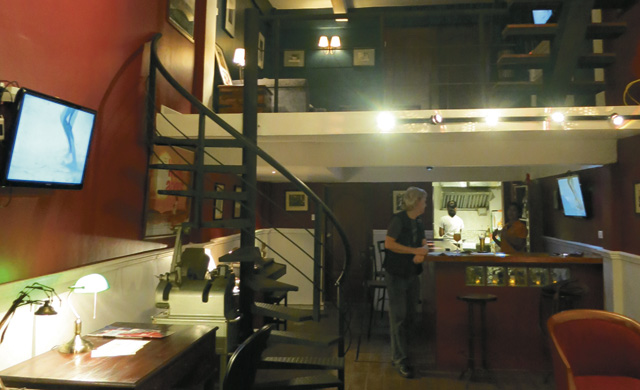
Run by a member of the local film industry, Paul Spurrier, who decided that he wanted to create a club where he could share his passion with fellow filmmakers, students and film buffs, this informal club is named after a pioneer of the movie industry. The lofty three-story shophouse has the feel of a gentlemen’s club, thanks to the tall bookshelf and writing desk that greet you, albeit one with a passion for movies as the classic posters that line the walls attest. There are a number of LCD screens by the bar showing that night’s film. Head up the metal spiral staircase to the third floor, home to the impressive nine-seat cinema which shows an intriguing selection of movies based around monthly themes. Drinks are nothing too complicated with the usual range of local and imported beers, from B90, but there’s a good list of cocktails (from B90 for a margarita), with each one referenced back to its appearance in a particular movie. Films are shown every night (except Monday and Tuesday) at 8pm and booking is advised, visit the website (www.fgc.in.th) for the full schedule.
259/6 Sukhumvit Soi 22, 087-000-0795. Open Tue-Sun 6pm-midnight
Despite the preponderance of big screens showing sport and the jokey sign out front referencing errant expat husbands, No Idea clearly aims to be more than a run-of-the-mill Western-style boozer. The place lifts itself above its surroundings through a stylish décor that has an almost hacienda feel, thanks to lots of weighty studded doors, lofty mezzanines, a grand staircase and an impressive al fresco balcony on the second floor. There’s a decent selection of wines from Australia, New Zealand and Argentina to choose from along with the usual imported pints like Kilkenny (B220) and Warsteiner (B200). Billed as a gastro bar, the food also looks to extend beyond the standard pub grub, with a fair amount of success, through international dishes like the Wagyu beef burger (B340), the Guinness-braised beef cheeks (B590) and double-cooked pork belly (B390).
8/3-4 Sukhumvit Soi 22, 02-663-6686. Open daily 10-2am
Soi 23
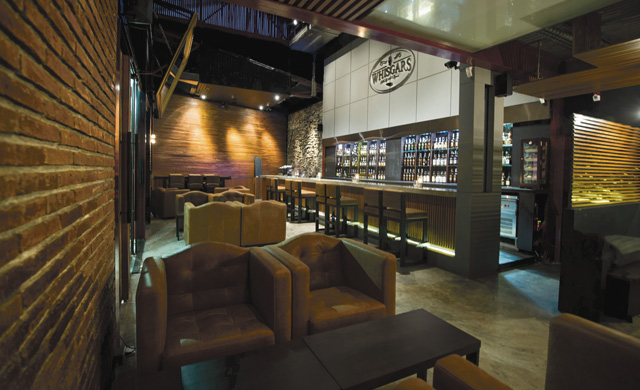
The recently opened Whisgars is a cigar and whiskey lounge tucked away at the back of long-standing Italian restaurant Giusto. It features a soaring ceiling, a mezzanine, a walk-in humidor plus a soundtrack of soft jazzy classics and Latin-inspired rhythms. Turning its back on Cuba, the bar’s cigar choices focus on four Nicaraguan and Dominican brands instead: Perdomo (from Nicaragua), El Primer Mundo, EP Carrillo and Pinar Del Rio (from the Dominican Republic), priced at B300-1,290 each. The long list of whiskeys comes from the Lowlands, Highlands, Islands and Islay Region of Scotland (B250-3,000), while you can order full meals or light bites from Giusto.
16 Sukhumvit Soi 23, 02-661-3220. Open daily 2pm-2am
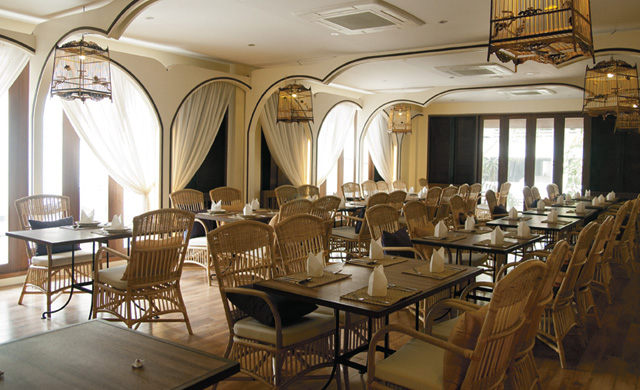
This 100-year-old house has the appearance of some kind of faux-museum: painted in the color of mohom (the traditional blue of Northern farmer’s shirts) and decorated in the style of the King Rama V-era, it’s fitted out with antiques and old photos. But once you reach the main dining area, the space is bright and contemporary. Much of the hype surrounding the restaurant, though, comes from its menu, which promises authentic Thai flavors derived from century-old recipes from the royal Thai court. The khao soi (noodles in Northern-style curry), served as part of the appetizers set (B250), is excellent thanks to its thick and flavorful curry. Another pleasant surprise, the platoo sordsai with sang-wa (deep-fried mackerel stuffed with minced pork in a mango salad, B380) is very refreshing, with the sweet-and-sour combination of chopped mango and lime working very well with the salty mackerel.
32-32/1 Sukhumvit Soi 23, 02-664-0664. Open daily 11:30am-2:30pm, 5:30-11:30pm

This venue on The Continent Bangkok’s 38/F goes for a gentlemen’s club vibe through its dark-toned vintage decor and leather sofas. For an atmosphere more suited to partying, climb the spiral stairs to the 39/F and you’ll find the DJ and a great view through the huge window on one side. Drinks included the Flip Punch (egg, sugar, rum and brandy, B300) and Tom and Jerry (egg, dark rum, brandy, syrup, cinnamon, cloves, spice, milk and nutmeg, B300). The music ranges from soul and funk to deep house, spun by local names like Queen P, Knot, Marcus and Mike Allin.
38, 39/F, The Continent Hotel Bangkok, 413 Sukhumvit Rd., 02-686-7000. BTS Asoke. Open daily 6-1am
Soi 31
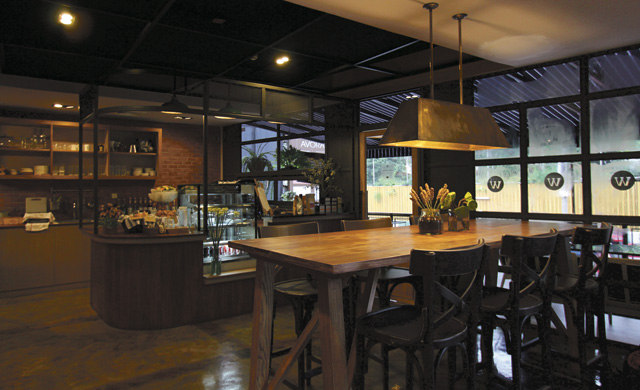
Introducing yet another new hip café in town, Wonderwall is sat a short walk from BTS Phrom Pong. The place’s NYC warehouse vibe—black window frames, brick walls—comes courtesy of Be Grey, whose previous works include Karmakamet, In the Mood for Love and Casa Lapin. Sip on an espresso or drip coffee (B60-B150) while noshing on sweet treats like brownies and ice cream (from B180).
Avora 31 Residence, 28 Sukhumvit Soi 31, 086-528-2824. Open Mon-Sat 7:30am-7pm, Sun 10am-7pm
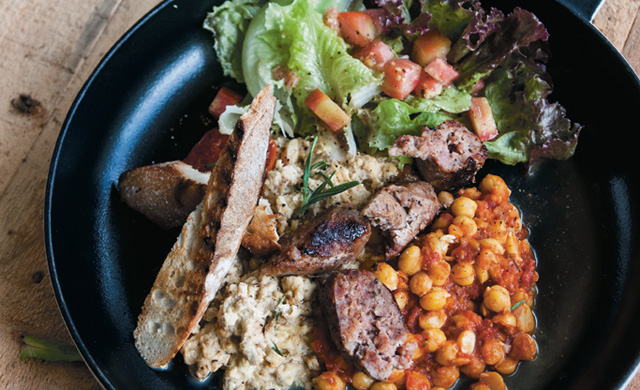
With its warm brick and redwood interior, organic grocers-slash-café-slash-restaurant Simple’s raison d’etre is to source the best produce from local farmers. The result is a store selling everything from brown rice to pure coconut oil and freshly-baked pain au chocolat (B75). Everyday brunch options include the full English breakfast (B280) or the frittata and slow-roasted tomato (B180) washed down with blended juices. Ask for the daily specials.
235/5 Sukhumvit Soi 31, 02-662-2510. Open Tue-Sun 7am-8pm
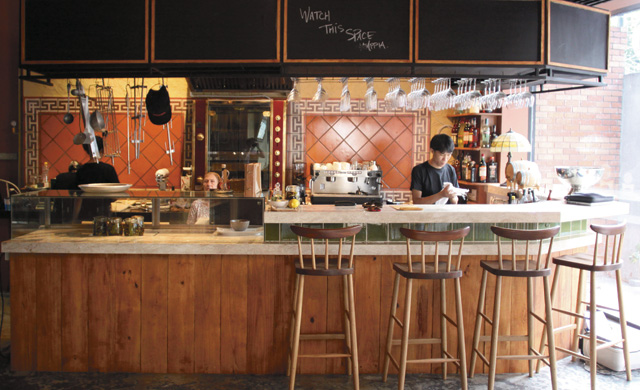
This is currently our favorite Italian restaurant in Bangkok. Warm and cozy like a true trattoria should be, the décor blends a wood-paneled ceiling, rustic ceramic tiles behind the deli-style counter and turn-of-the-century bistro chairs. And while Chef Paolo has years of experience at five-star hotels, his style here is casual and sharing-friendly. The homemade pasta (starting from B350) is incredibly al dente, and the sauces to die for, while the beautiful rotisserie roasts pork and chicken to a perfect crisp. The resulting porchetta (B400 for small, B600 for main portion), stuffed with pork liver and herbs, is Appia’s signature dish, but do also try the deliciously smooth veal tartare (B475). You can also expect a carefully curated wine selection.
20/4 Sukhumvit Soi 31, 02-261-2056. Open daily 6:30pm-12am
18. WHATIF 

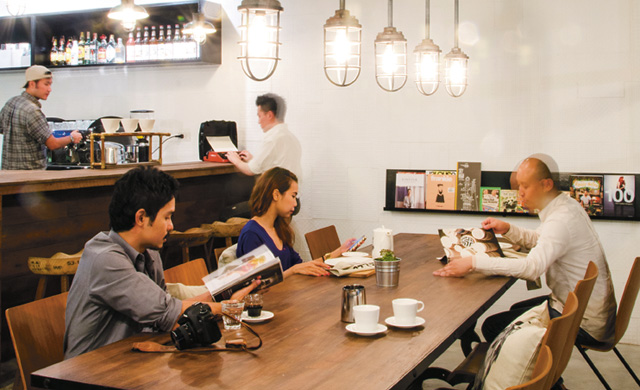
Counting down the days to its opening on Sukhumvit Soi 31 at the end of this month, this lifestyle shop and café boasts a modern-meets-rustic interior. The place will sell decorative items like camouflage pattern wallpaper, fabric for furniture and cushions and animal head print tableware, while it will also be home to a café with refreshments like coffee and tea.
The Green Connect, Sukhumvit Soi 31, 02-662-8048.
19. The Lab 

Want to try something a little different from a boring old circuit. Maybe olympic bars and kettle bells? Fitness studio The Lab just expanded and added a new space on the second floor of RSU Tower, and now has TRX suspension training, ceiling ropes, gymnastic rings, and all the usual weight training. Group classes like strength, weight loss and combat training are also available. Memberships start from B3,700 for a one-month, eight-time use.
2&3/F, RSU Tower, Sukhumvit Soi 31, 02-662-1618. Open daily 7am-9pm
20. Sweet Pista 
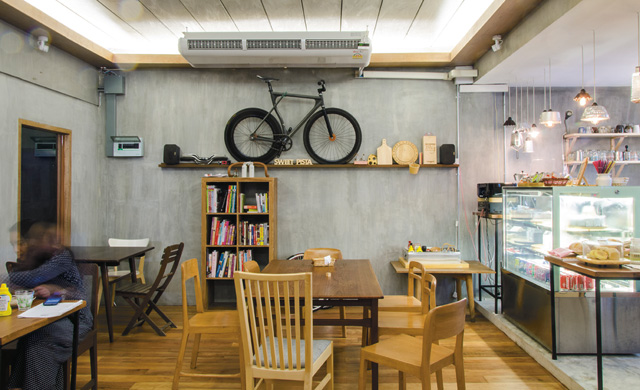
This little café has just moved up the street but remains an homage to fixie bicycles and desserts. Tuck into young coconut cake (B110) or tiramisu (B110), or even make it a full meal thanks to their short selection of savory dishes like khao mah kai dao (shredded pork with garlic and rice served with fried egg, B100) and spare ribs (B150).
235/21 Sukhumvit Soi 31, 02-662-2866. Open daily 11am-10pm
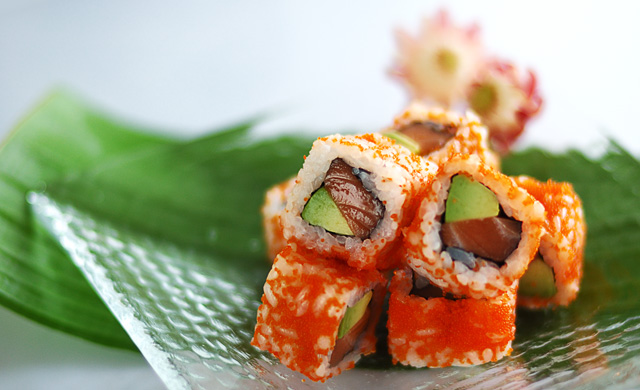
From the outside, this narrow two-story shophouse looks like just any other sushi bar in a city of countless raw fish eateries. But step inside and you’ll discover Isao offers something different. There is a relaxed homey feel: simple booths run along the bamboo-clad wall while the rest of the space is dominated by the sushi bar and counter. You also get a warm welcome from the attentive and well informed staff. The food here focuses on sushi with a distinctly US twist—one of the chefs worked in Chicago’s Green Tea sushi bar. For appetizers, don’t miss the Volcano (B350), a spicy scallop served in its shell and which looks like a glowering mound of molten lava. Another favorite is the Rosy Salmon (B320), melt-in-your-mouth salmon and shavings of lemon formed into a delicate rose.
5 Sukhumvit Soi 31, 02-258-0645. MRT Sukhumvit. Open daily 11am-2:30pm and 5:30-10pm

This recently relocated molecular restaurant is taking real risks with its food and décor. The three-story building’s facade is a tangle of concrete beams, steel cables and ferns, achieving an effect that manages to be both beautiful and slightly post-apocalyptic. The interior is divided into two zones; the bar, and the open kitchen–dining area. The chef’s table menu (B2,800 for 5 courses) changes regularly with dishes such as egg, bacon and wild mushroom in potato foam, and Yarra Valley lamb, beautifully presented with two pieces of lamb rack in red wine jus, seared with eggplant paste and tomato. Drinks include an impressive list of wines picked from small vineyards from across the globe as well as imported beers like Hobgoblin (B330) from Wychwood Brewery in England and Forest Fruits (B330) from the Netherlands.
68 Sukhumvit Soi 31, 02-102-2323, 084-551-5559. Open Tue-Sun 6pm-1am
Soi 33
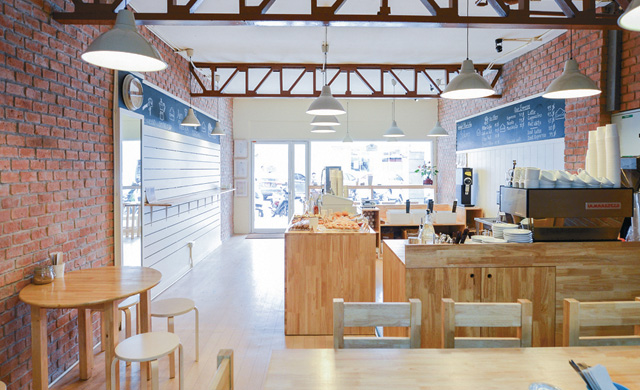
Owned by a Venezuelan family, the recently opened Ceresia Coffee Roasters is a small but pleasantly light and airy brick and wood dominated space. The highlight is that they sell single origin and original blended coffee sourced from a variety of farms worldwide, roasted in small batches and rotated seasonally. Try their filter coffee (B95) or a flat white (B95) along with a slice of carrot cake (B75).
593/29-41 Sukhumvit Soi 33/1, 086-843-8235. Open Tue-Sun 8am-6pm
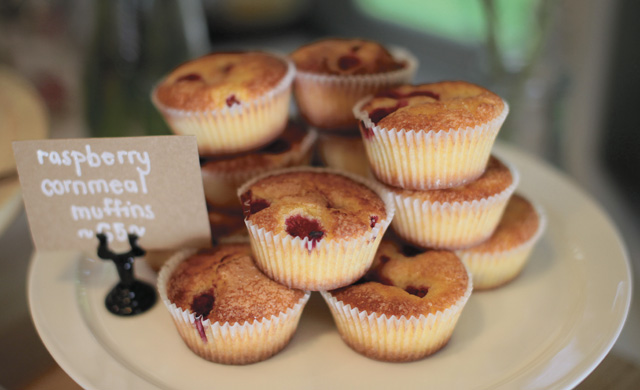
This compact café serves up a variety of homemade cakes in a chill outdoor setting. Indulge in their tasty coconut cake (B90) or choose from the freshly baked treats on display such as carrot cupcake (B75) and banana Nutella muffin (B85). Also grab a cold latte (B65) to go. Don’t forget to give the big fat beagle a big old cuddle, it’s good for the soul.
19/5 Sukhumvit Soi 33, 081-928-8506. Open Wed-Sun 11am-6:30pm
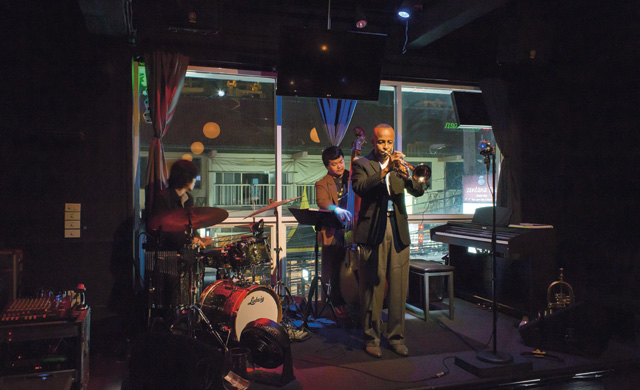
Owner Idrees Dawud is an American jazz devotee and trumpeter whose father actually played with Art Blakey and Thelonious Monk in the legendary The Jazz Messengers. There are live performances daily from 7pm except Mon-Tue with the line-up changing regularly, drawing from a pool of local musicians. Entry fee B200, whisky from B270/glass, beer from B170.
2/F Nuam Complex,1 Soi Daeng Udom, Sukhumvit Soi 33, 092-523-6862. Set to reopen in Oct. www.ohsomuchjazz.com.
Although The Londoner is billed as a British pub, the brewmaster, Peter Schwarzmueller, is a true Bavarian and a real beer connoisseur. His two house brews, London Pilsner 33 and Londoner’s Pride Cream Bitter, are products of his German heritage, and cost B100 a pint. These brews are backed up by the pub’s epic two-for-one on drinks deal every Wednesday night, lots of screens for the sport and a great Sunday roast.
B/F, UBC II Bldg., Sukhumvit Soi 33, 02-261-0238/9. Open daily 11-1am
27. Chillax Spa 


This latest spa opening on Sukhumvit Soi 33 is one that looks to soothe the aches and pains of partygoers. The decor is cozy and minimal, with touches of wood. Apart from the usual Thai and aroma massages and body scrubs, the real highlight treatments are those aimed at rejuvenating you after a night of partying, like the Hangover Retreat (head massage and special drink B1,200/1h30min) and The Micro Nap (B800/1h). The spa also features a bar—yep, you heard it right—serving wine, cocktails and whisky.
12/1 Sukhumvit Soi 33, 02-258-5018. Open Tue-Sun 10am-midnight

















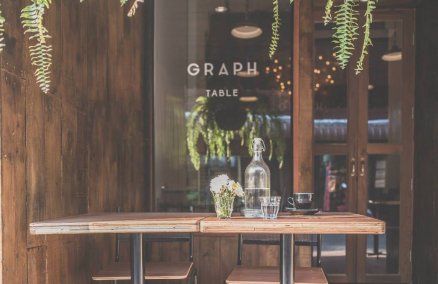




 Restaurant
Restaurant  Cafe
Cafe  Bar
Bar  Spa
Spa  Fitness
Fitness





























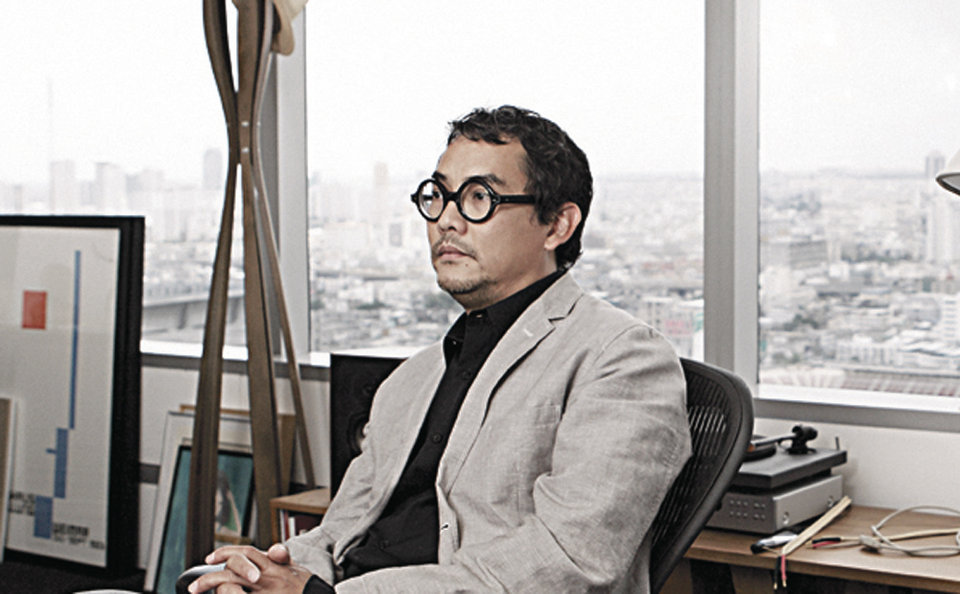 “No person can be blamed; it's down to all of us who never make a stand to protect green spaces in Bangkok. We speak out on what we want to have in this city, but gossiping and complaining can’t change things. The old Terms Of Reference (TOR) for Makkasan didn’t make any sense in terms of truly developing the city. The SRT needs B200 billion [to repay its debts] but no private sector company has that kind of huge budget to develop the Makkasan area, which could end up being another 'Hopewell' [a failed infrastucture project] if it isn’t well-planned. As a citizen and architect, I decided to go and talk to the Transport Minister Chatchart Sittipan to offer my idea about how Makkasan could be developed. I feel [my plan] is the better solution for the city. We can have a park, museum as well as commercial areas and a market like Chatuchak without cutting down all the trees and destroying the beautiful old buildings. The authorities might not listen but at least I made a stand for what I want for this city. Now it’s your turn to stand up for what you want in this city too.”
“No person can be blamed; it's down to all of us who never make a stand to protect green spaces in Bangkok. We speak out on what we want to have in this city, but gossiping and complaining can’t change things. The old Terms Of Reference (TOR) for Makkasan didn’t make any sense in terms of truly developing the city. The SRT needs B200 billion [to repay its debts] but no private sector company has that kind of huge budget to develop the Makkasan area, which could end up being another 'Hopewell' [a failed infrastucture project] if it isn’t well-planned. As a citizen and architect, I decided to go and talk to the Transport Minister Chatchart Sittipan to offer my idea about how Makkasan could be developed. I feel [my plan] is the better solution for the city. We can have a park, museum as well as commercial areas and a market like Chatuchak without cutting down all the trees and destroying the beautiful old buildings. The authorities might not listen but at least I made a stand for what I want for this city. Now it’s your turn to stand up for what you want in this city too.” “Undeveloped land like this plays a really important part in absorbing water. Soil can absorb millions of cubic meters of rainwater every year. Makkasan is full of such land and is also home to a large swamp that acts like a cesspit for Bangkok. There's nowhere else like this in the city anymore. We already waste millions of Baht every year to buy oil to run water pumps to stop the flooding in the rainy season. So imagine if we cover Makkasan with concrete, where do you think all the water it currently retains will go? Think of the billions we’re going to waste having to deal with worse floods in the future.”
“Undeveloped land like this plays a really important part in absorbing water. Soil can absorb millions of cubic meters of rainwater every year. Makkasan is full of such land and is also home to a large swamp that acts like a cesspit for Bangkok. There's nowhere else like this in the city anymore. We already waste millions of Baht every year to buy oil to run water pumps to stop the flooding in the rainy season. So imagine if we cover Makkasan with concrete, where do you think all the water it currently retains will go? Think of the billions we’re going to waste having to deal with worse floods in the future.”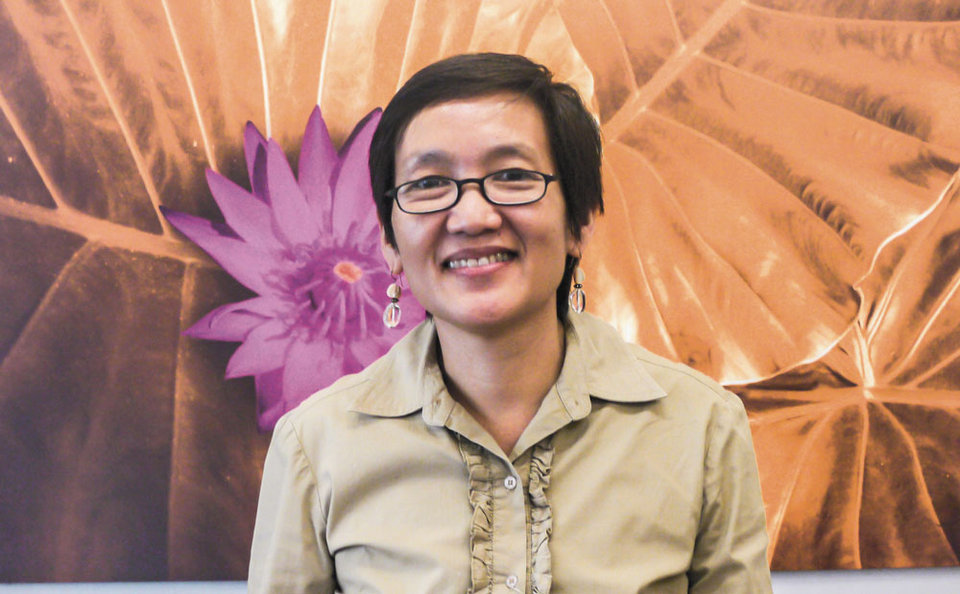 “Adaptive reuse for old buildings is a world trend and a way of preserving the city’s character and history, and in turn attracting visitors. For example, the Bercy area in Paris where they transformed 19th Century wine warehouses into shops and restaurants instead of just letting them decay. It’s now a popular area for people to hang out and shop. Bangkok must protect its heritage as a key selling point too. Makkasan isn’t a blank space with no history. It's home to Thailand’s first train factory and it’s main building was built way back in 1922. The building has such a high architectural value that the Association of Siam Architects (ASA) honored it with a Conservation Award in 2006. If we delete our roots by destroying our existing history, such as old buildings like these, then what story will we have left to tell the next generation and people from all over the world? Reading history books just can’t compare to seeing and touching something that is real and in front of you.”
“Adaptive reuse for old buildings is a world trend and a way of preserving the city’s character and history, and in turn attracting visitors. For example, the Bercy area in Paris where they transformed 19th Century wine warehouses into shops and restaurants instead of just letting them decay. It’s now a popular area for people to hang out and shop. Bangkok must protect its heritage as a key selling point too. Makkasan isn’t a blank space with no history. It's home to Thailand’s first train factory and it’s main building was built way back in 1922. The building has such a high architectural value that the Association of Siam Architects (ASA) honored it with a Conservation Award in 2006. If we delete our roots by destroying our existing history, such as old buildings like these, then what story will we have left to tell the next generation and people from all over the world? Reading history books just can’t compare to seeing and touching something that is real and in front of you.” “When we consider any giant development we must think of the characteristics of the city and how the development connects with people. Instead of targeting profit first, Makkasan should be developed as a mixed-use space. Think of Beijing’s 798 Art Zone that transformed a 50-year-old decommissioned military factory into a major art district. It is now a hugely popular area, has given people a creative space and also helped them to connect with each other. It makes the city more dynamic, helps increase the value of the neighboring properties and also generates income from tourists. Think of Makkasan’s location and its great transport options thanks to the Airport Link. It could become an important hub for Bangkok and all of its inhabitants, not just those with lots of money. King Rama V donated the land to the SRT 100 years ago with the aim of benefitting the country as a whole, so the SRT needs to stick to that vision.”
“When we consider any giant development we must think of the characteristics of the city and how the development connects with people. Instead of targeting profit first, Makkasan should be developed as a mixed-use space. Think of Beijing’s 798 Art Zone that transformed a 50-year-old decommissioned military factory into a major art district. It is now a hugely popular area, has given people a creative space and also helped them to connect with each other. It makes the city more dynamic, helps increase the value of the neighboring properties and also generates income from tourists. Think of Makkasan’s location and its great transport options thanks to the Airport Link. It could become an important hub for Bangkok and all of its inhabitants, not just those with lots of money. King Rama V donated the land to the SRT 100 years ago with the aim of benefitting the country as a whole, so the SRT needs to stick to that vision.” “It’s hard to find a space in Bangkok that serves everyone from kids to senior citizens. As a musician and teacher, it’s difficult to find a place for learning activities in the city. We need an open art square that can serve all kinds of art activities even dance! Creating culture makes people come to an area which in turn benefits local business and society.”
“It’s hard to find a space in Bangkok that serves everyone from kids to senior citizens. As a musician and teacher, it’s difficult to find a place for learning activities in the city. We need an open art square that can serve all kinds of art activities even dance! Creating culture makes people come to an area which in turn benefits local business and society.” “Bangkok city is like hell on earth. The air in the inner city is choked by toxins from factories and cars that are fatal in the long term. The inner city has less than two sq meter of green space per person but you need green space to tackle air pollution. The only way of truly cleaning up our air is through our trees. We definitely need more green space.”
“Bangkok city is like hell on earth. The air in the inner city is choked by toxins from factories and cars that are fatal in the long term. The inner city has less than two sq meter of green space per person but you need green space to tackle air pollution. The only way of truly cleaning up our air is through our trees. We definitely need more green space.” “We as Bangkokians have focused on economic growth and neglected our quality of life for too long. Let’s create a society where parks are part of our life, not just shopping malls. Makkasan can easily become our new park as it’s already full of 100-year-old trees. It can be a place for people to learn about nature and the environment right in the heart of the city, while the gorgeous buildings can be a beautiful train museum. It only takes a few months to create a new building but it takes a 100 years to grow a big tree. Let’s make parks our new destination.”
“We as Bangkokians have focused on economic growth and neglected our quality of life for too long. Let’s create a society where parks are part of our life, not just shopping malls. Makkasan can easily become our new park as it’s already full of 100-year-old trees. It can be a place for people to learn about nature and the environment right in the heart of the city, while the gorgeous buildings can be a beautiful train museum. It only takes a few months to create a new building but it takes a 100 years to grow a big tree. Let’s make parks our new destination.”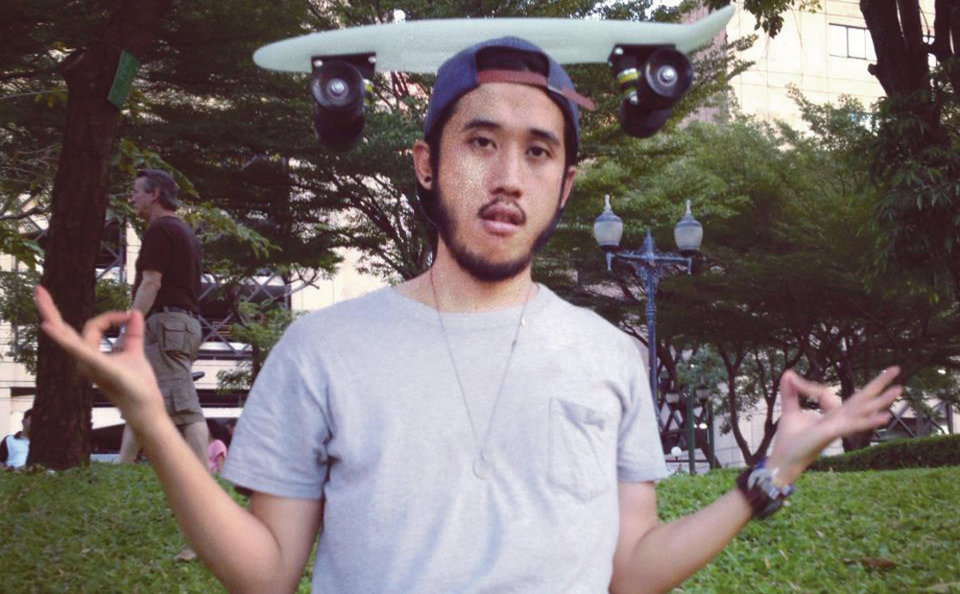 “It is time for Bangkok to have an area dedicated to art. Other major metropolises around the world have their art streets or art zones which help benefit street culture and the city’s overall creativity. As I live near Makkasan, I know how useless it is to have the land just sitting there doing nothing. It would be great for the community that surrounds it to have a museum or public space where artists and the public can gather and share ideas together.”
“It is time for Bangkok to have an area dedicated to art. Other major metropolises around the world have their art streets or art zones which help benefit street culture and the city’s overall creativity. As I live near Makkasan, I know how useless it is to have the land just sitting there doing nothing. It would be great for the community that surrounds it to have a museum or public space where artists and the public can gather and share ideas together.”